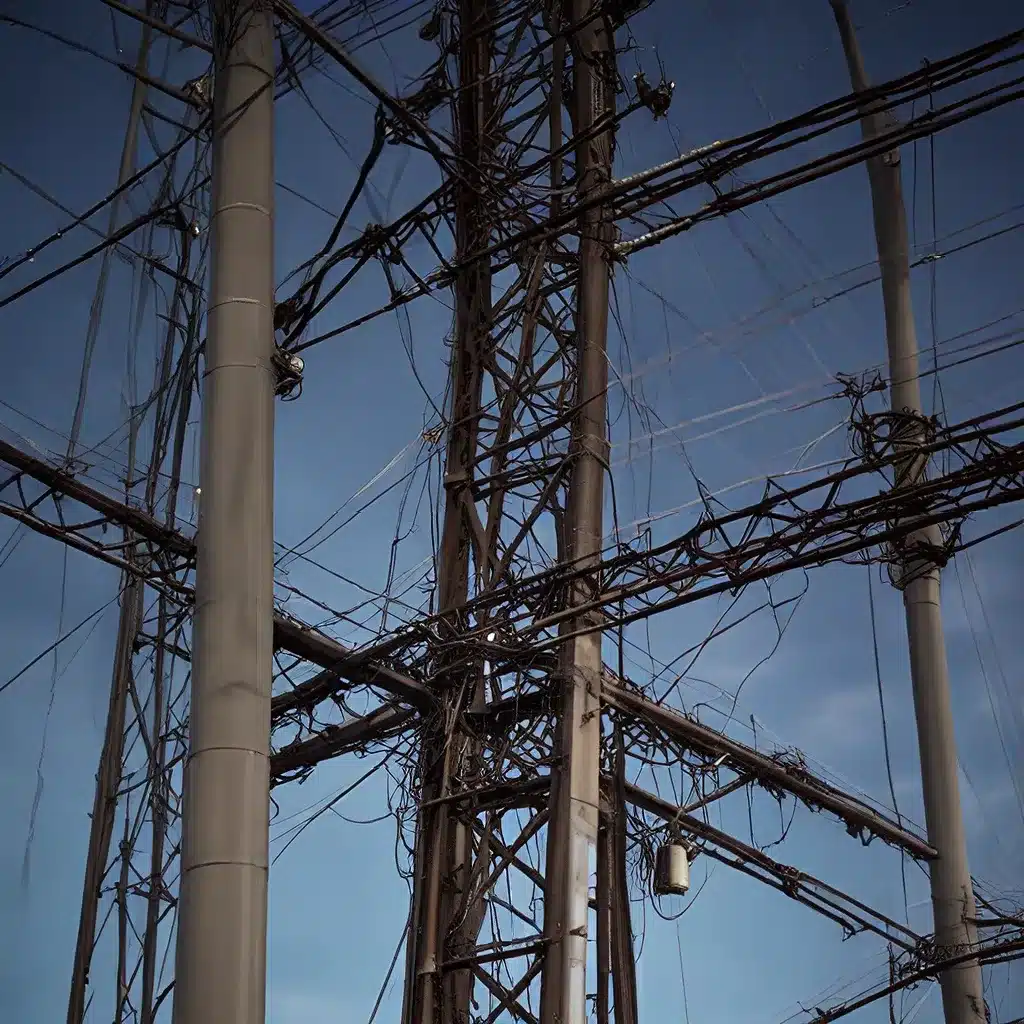
In an increasingly connected world, the critical infrastructure that underpins our way of life has become increasingly reliant on sensor networks and IoT (Internet of Things) technologies. From smart grids and transportation systems to water treatment facilities and healthcare, these advanced sensor-based systems are revolutionizing how we monitor, manage, and optimize the essential services we depend on. However, this increased connectivity also brings a heightened risk of cyber threats, making the security and resilience of these sensor networks a top priority.
The Evolving Landscape of Sensor Networks in Critical Infrastructure
Sensor networks have become the backbone of critical infrastructure, enabling real-time monitoring, data-driven decision-making, and automated control systems. These interconnected networks of sensors, gateways, and communication protocols collect a wealth of information, providing critical insights that help optimize operations, improve efficiency, and enhance public safety.
As the deployment of sensor networks continues to expand, so too does their role in critical infrastructure sectors, such as energy, transportation, water, and healthcare. In the energy sector, for example, sensor networks are used to monitor and manage smart grids, ensuring the reliable and efficient delivery of electricity. In the transportation industry, sensor-enabled infrastructure helps to manage traffic flow, optimize routes, and improve vehicle safety.
The benefits of these sensor-based systems are undeniable, but they also introduce new security challenges that must be addressed. As critical infrastructure becomes increasingly interconnected, the potential for cyber attacks to disrupt essential services and threaten public safety grows. Securing these sensor networks is therefore a pressing concern, and a key focus for government agencies and industry stakeholders alike.
Securing Sensor Networks: Protecting Critical Infrastructure
Securing sensor networks in critical infrastructure requires a multi-layered approach that addresses both technological and organizational aspects. Here are some key strategies and considerations:
Robust Network Architecture
The foundation of a secure sensor network lies in its architecture. Implementing secure network topologies, such as mesh networks or star networks, can enhance resilience and limit the impact of individual node failures or compromises. Additionally, the use of encryption protocols and secure communication channels (e.g., HTTPS) is crucial to protect data transmission and prevent unauthorized access.
Advanced Cybersecurity Measures
Sensor networks in critical infrastructure must be equipped with robust cybersecurity measures to defend against a range of threats, including malware, denial-of-service attacks, and unauthorized access. This includes the deployment of intrusion detection and prevention systems, firewalls, and access controls to monitor and mitigate potential threats.
Comprehensive Vulnerability Management
Regularly assessing and addressing vulnerabilities in sensor network components, firmware, and software is essential. This involves conducting vulnerability scans, applying security patches, and implementing secure software development practices to ensure that any identified weaknesses are promptly addressed.
Resilient Power Management
Ensuring the resilience and continuity of sensor networks is critical, as a loss of power or disruption to energy supplies can have devastating consequences for critical infrastructure. Strategies such as redundant power sources, energy-efficient designs, and backup power systems can help maintain the operability of sensor networks during unexpected events or disruptions.
Collaborative Threat Monitoring and Response
Effective sensor network security requires close collaboration between government agencies, industry partners, and security experts. Initiatives like the Cybersecurity and Infrastructure Security Agency (CISA) in the United States facilitate information sharing, threat monitoring, and coordinated response to help critical infrastructure organizations stay ahead of evolving cyber threats.
Ensuring Resilience and Adaptability
As the threat landscape continues to evolve, critical infrastructure organizations must ensure that their sensor networks are not only secure but also resilient and adaptable. This involves:
Continuous Monitoring and Incident Response
Implementing robust monitoring and incident response capabilities is essential to detect, investigate, and respond to cyber incidents in real-time. This includes the deployment of security information and event management (SIEM) systems, security operations centers (SOCs), and incident response plans that can be quickly activated in the event of a breach.
Resilience through Redundancy and Backup
Building redundancy into sensor network architectures, such as multiple communication channels and backup systems, can help maintain critical functionality even in the face of disruptions or attacks. Regular backups and disaster recovery plans also play a crucial role in ensuring the continued availability and resilience of critical infrastructure services.
Adaptive and Agile Security Strategies
As cyber threats continue to evolve, critical infrastructure organizations must adopt adaptive and agile security strategies that can keep pace with changing attack vectors and emerging technologies. This includes continuous security assessments, threat intelligence gathering, and the adoption of advanced security solutions that can dynamically respond to new threats.
The Future of Sensor Networks in Critical Infrastructure
As the role of sensor networks in critical infrastructure continues to expand, the need for robust security and resilience measures will only become more pressing. By embracing innovative security approaches, collaboration, and continuous improvement, critical infrastructure organizations can ensure that the benefits of these transformative technologies are realized while mitigating the risks posed by cyber threats.
The sensor networks of the future will play an increasingly vital role in maintaining the security, efficiency, and reliability of the essential services that our societies depend on. By staying ahead of the curve and implementing best practices in sensor network security, critical infrastructure stakeholders can help build a more secure and resilient future for all.